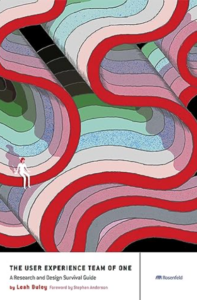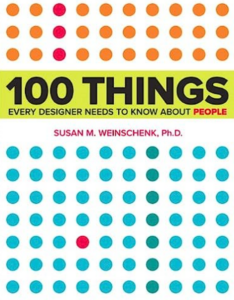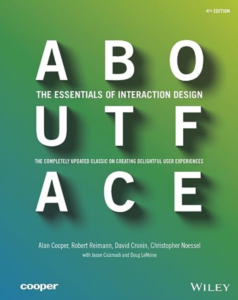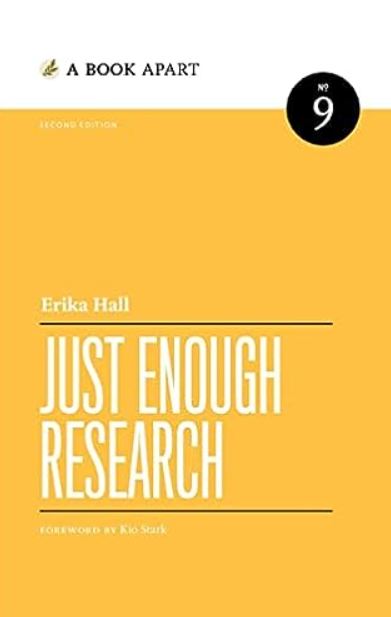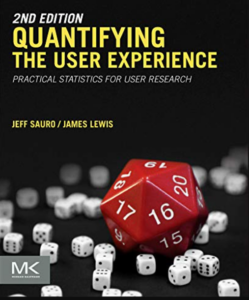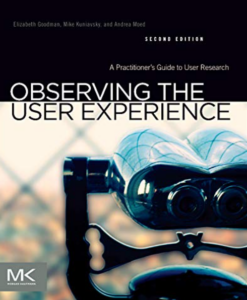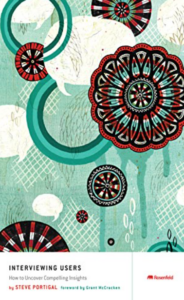Our collection of some of the top-rated books about UX research
In today’s rapidly evolving digital landscape, creating exceptional user experiences has become a paramount goal for businesses and designers alike. User Experience (UX) research plays a pivotal role in crafting products and services that not only meet user needs but exceed their expectations. Whether you’re a seasoned UX professional seeking to enhance your skills or a newcomer eager to dive into the world of user-centered design, a reliable guide is indispensable. In this blog post, we’ll explore a curated list of some of the best UX research books that offer invaluable knowledge, enabling you to unlock the secrets of user-centric design and create digital experiences that resonate with your audience.
1. The User Experience Team of One: A Research and Design Survival Guide
by Leah Buley
Leah Buley addresses the challenges faced by solo UX practitioners, providing strategies for conducting user research, design, and collaboration within resource-constrained environments, empowering individuals to make a significant impact on user experience despite limited resources.
Amazon Description:
The User Experience Team of One prescribes a range of approaches that have big impact and take less time and fewer resources than the standard lineup of UX deliverables. Whether you want to cross over into user experience or you’re a seasoned practitioner trying to drag your organization forward, this book gives you tools and insight for doing more with less.
2. 100 Things Every Designer Needs to Know About People
by Susan Weinschenk, Ph.D.
Susan Weinschenk offers valuable insights into human behavior and psychology, uncovering essential principles that designers can apply to create more intuitive and user-centric products, providing a deep understanding of how users perceive and interact with digital interfaces.
Amazon Description:
We design to elicit responses from people. We want them to buy something, read more, or take action of some kind. Designing without understanding what makes people act the way they do is like exploring a new city without a map: results will be haphazard, confusing, and inefficient. This book combines real science and research with practical examples to deliver a guide every designer needs. With it you’ll be able to design more intuitive and engaging work for print, websites, applications, and products that matches the way people think, work, and play.
3. About Face: The Essentials of Interaction Design
by Alan Cooper, Robert Reimann, David Cronin, Christopher Noessel
This comprehensive guide delves into the fundamentals of interaction design, offering principles and methodologies for creating meaningful and user-friendly interactions that prioritize user needs and enhance usability.
Amazon Description:
About Face: The Essentials of Interaction Design, Fourth Edition is the latest update to the book that shaped and evolved the landscape of interaction design. This comprehensive guide takes the worldwide shift to smartphones and tablets into account. New information includes discussions on mobile apps, touch interfaces, screen size considerations, and more. The new full-color interior and unique layout better illustrate modern design concepts.
The interaction design profession is blooming with the success of design-intensive companies, priming customers to expect “design” as a critical ingredient of marketplace success. Consumers have little tolerance for websites, apps, and devices that don’t live up to their expectations, and the responding shift in business philosophy has become widespread. About Face is the book that brought interaction design out of the research labs and into the everyday lexicon, and the updated Fourth Edition continues to lead the way with ideas and methods relevant to today’s design practitioners and developers.
4. Just Enough Research
by Erika Hall
Erika Hall’s guide is tailored to designers who want to incorporate research into their process without feeling overwhelmed. The book provides practical advice on conducting impactful research to inform design decisions.
Amazon Description:
Good research is about asking more and better questions, and thinking critically about the answers. Done well, it will save your team time and money by reducing unknowns and creating a solid foundation to build the right thing, in the most effective way.
Erika Hall distills her experience into a guidebook of trusted research methods you can implement right away, no matter what size team you’re on or budget you’re working with. Learn how to discover your competitive advantages, spot your own blind spots and biases, understand and harness your findings, and why you should never, ever hold a focus group. You’ll start doing good research faster than you can plan your next pitch.
5. Quantifying the User Experience: Practical Statistics for User Research
by Jeff Sauro and James R. Lewis
Sauro and Lewis focus on the quantitative side of UX research, teaching readers how to collect and analyze data to make informed design choices. The book offers practical guidance on employing statistics effectively.
Amazon Description:
Quantifying the User Experience: Practical Statistics for User Research, Second Edition, provides practitioners and researchers with the information they need to confidently quantify, qualify, and justify their data. The book presents a practical guide on how to use statistics to solve common quantitative problems that arise in user research. It addresses questions users face every day, including, Is the current product more usable than our competition? Can we be sure at least 70 percent of users can complete the task on their first attempt? How long will it take users to purchase products on the website?
This book provides a foundation for statistical theories and the best practices needed to apply them. The authors draw on decades of statistical literature from human factors, industrial engineering, and psychology, as well as their own published research, providing both concrete solutions (Excel formulas and links to their own web calculators), along with an engaging discussion on the statistical reasons why tests work and how to effectively communicate results. Throughout this new edition, users will find updates on standardized usability questionnaires, a new chapter on general linear modeling (correlation, regression, and analysis of variance), with updated examples and case studies throughout.
6. Observing the User Experience: A Practitioner’s Guide to User Research
by Elizabeth Goodman, Mike Kuniavsky, and Andrea Moed
Goodman, Kuniavsky, and Moed offer a comprehensive exploration of user research methodologies and techniques. The book equips readers with the skills needed to conduct insightful user research and gather actionable insights.
Amazon Description:
The gap between who designers and developers imagine their users are, and who those users really are can be the biggest problem with product development. Observing the User Experience will help you bridge that gap to understand what your users want and need from your product, and whether they’ll be able to use what you’ve created.
Filled with real-world experience and a wealth of practical information, this book presents a complete toolbox of techniques to help designers and developers see through the eyes of their users. It provides in-depth coverage of 13 user experience research techniques that will provide a basis for developing better products, whether they’re Web, software or mobile based. In addition, it’s written with an understanding of product development in the real world, taking tight budgets, short schedules, and existing processes into account.
7. Interviewing Users: How to Uncover Compelling Insights
by Steve Portigal
This book provides a comprehensive guide to conducting effective user interviews, a key component of UX research, to uncover valuable insights. Portigal skillfully navigates readers through the intricacies of crafting effective interview sessions, offering practical techniques, strategies, and real-world examples. The book emphasizes the importance of empathy and active listening, teaching readers how to create a comfortable environment that encourages participants to share their authentic thoughts and experiences.
Amazon Description:
Interviewing is a foundational user research tool that people assume they already possess. Everyone can ask questions, right? Unfortunately, that’s not the case. Interviewing Users provides invaluable interviewing techniques and tools that enable you to conduct informative interviews with anyone. You’ll move from simply gathering data to uncovering powerful insights about people.
Best UX Research Books Conclusion
The journey to mastering UX research is a continuous process, and these handpicked books serve as your compass, guiding you through the complex landscape of user behavior, cognitive psychology, and design thinking. These books equip you with the tools and insights needed to champion user-centered design. So, whether you’re a designer, developer, entrepreneur, or simply someone fascinated by the world of user experiences, these UX research books are your gateway to crafting digital interactions that resonate, engage, and delight users in meaningful ways. Happy reading and even happier researching!

